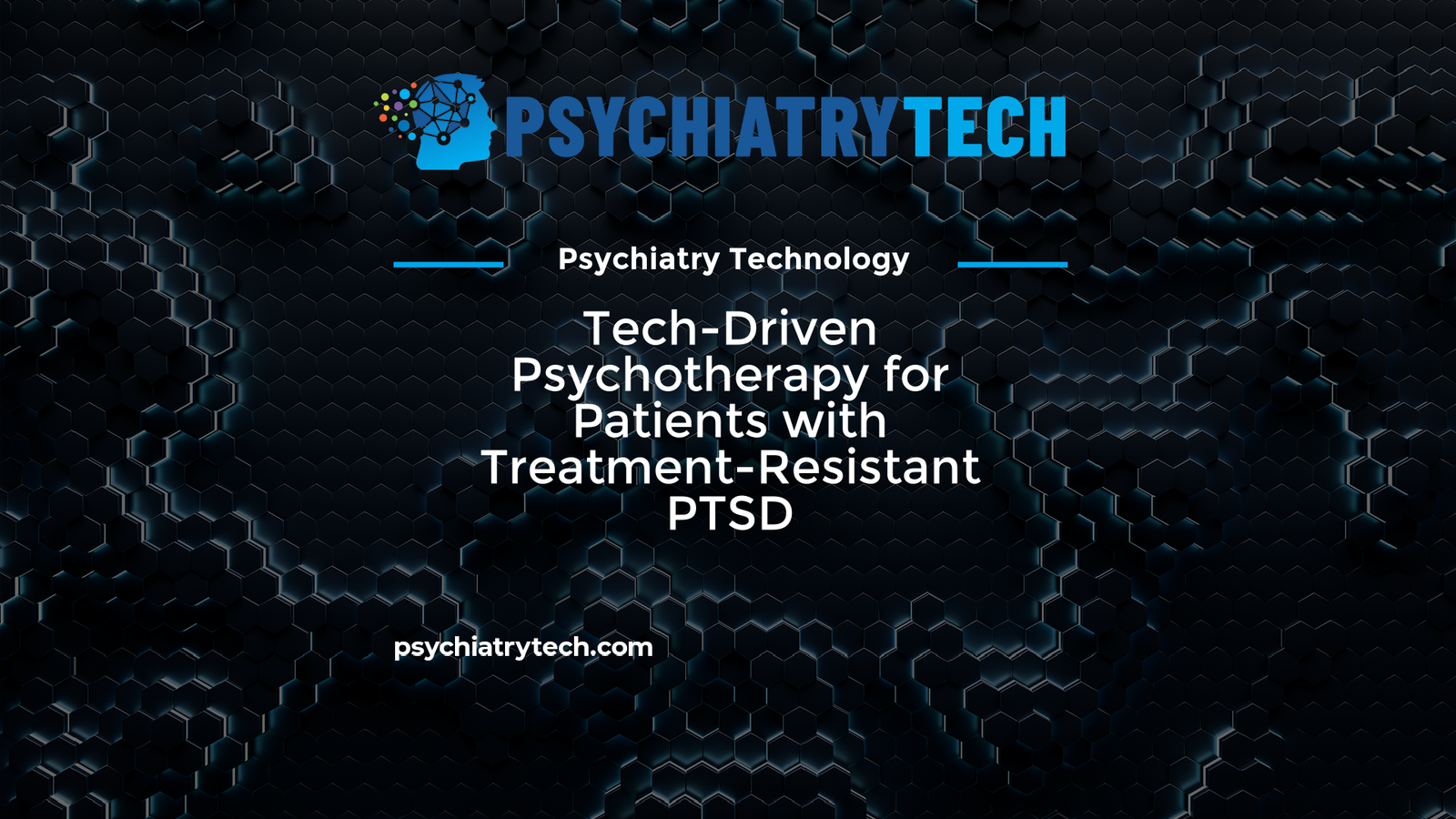“`html
Tech-Driven Psychotherapy for Patients with Treatment-Resistant PTSD
Therapies have progressed significantly in the management of Post-traumatic stress disorder (PTSD), a mental health condition being faced by millions of people worldwide. However, there’s a population of affected individuals who still struggle with this condition despite undergoing existing treatment procedures. In this article, we’ll dive deep into understanding how technology-driven interventions are making a mark.
The Challenge of Treatment-Resistant PTSD
PTSD is a complex condition which can result from a range of traumatic experiences – from personal incidents like road accidents or violent attacks to military combat. Symptoms of PTSD include recurrent distressing memories of the traumatic incident, nightmares, emotional distress and physical reactions to situations that remind the patient of the trauma. These symptoms can persist and worsen over time, severely affecting the daily life and overall functionality of the individual.

Discover The World's MOST COMPREHENSIVE Mental Health Assessment Platform
Efficiently assess your patients for 80+ possible conditions with a single dynamic, intuitive mental health assessment. As low as $12 per patient per year.
Treatment-resistant PTSD refers to the cases where patients show little or no improvement despite undergoing standard treatment procedures like psychotherapy, medications, or both. This is particularly prevalent in military veterans, making it a critical area of research.
Tech in Psychotherapy: A New Hope
Efforts to enable effective PTSD management are now focusing on supplementing traditional therapy with technology-driven interventions. For instance, Virtual Reality (VR) has shown promise in this regard.
The method entails the delivery of exposure therapy using VR to help patients face and manage their traumatic experiences better. It provides a controlled environment where the patient can confront their fears and learn coping mechanisms without being physically present at the scene.
How VR Work in Case of PTSD
VR therapy for PTSD typically begins with creating a personalized virtual environment related to the patient’s traumatic experience. This simulated environment is then used for conducting exposure therapy, where the patient, aided by a therapist, navigates through the simulation to recall the traumatic event in a safe and controlled manner.
The therapist generally controls the intensity of the simulation, challenging the patient to face their fears while providing them the required emotional support. As sessions continue, the intensity of the simulation is amplified, motivating the patient to employ coping mechanisms learned from their therapy.
Studies have shown that this technology-driven psychotherapy produces an improved response in patients with significant PTSD symptom reduction upon completion of the treatment.
Limitations and Future Prospects
Though promising, VR in PTSD management is yet to become a widely accepted intervention method. This is mainly due to its cost, lack of geographical accessibility for patients living in remote areas, and overall stigma associated with mental health. Future efforts in this line of research will focus on overcoming these limitations while leveraging the potentials of technology in psychotherapy for PTSD.
Conclusion: Embracing the Future
The amalgamation of psychotherapy and technology gives a profound hope in addressing the complex challenge of treatment-resistant PTSD. As we uncover more potentials of technologies like VR, we are set on a promising journey towards transforming the future of mental health treatment.
Would you like to join us in exploring more about tech innovations in psychiatry? Share this post with your networks and create more awareness about the role of technology in mental health!
“`

